Blink Outdoor Camera Review 2025
A hardworking, affordable, DIY outdoor camera with only a few minor flaws

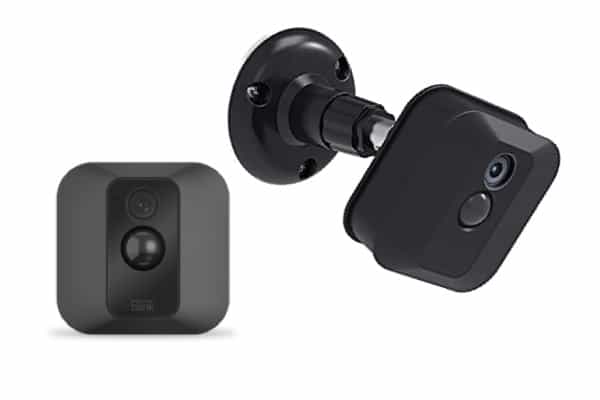
SafeHome.org may receive compensation from some providers listed on this page. Learn More
We may receive compensation from some providers listed on this page. Learn More
A hardworking, affordable, DIY outdoor camera with only a few minor flaws


Editor’s Note: You’re interested in keeping the perimeter of your property safe. We get that, which is why we tested and reviewed the best outdoor home security systems on the market. We recommend going through that list before settling on just one or a few outdoor cameras.
When it comes to the outdoor security cameras that we test, reliability is among our top priorities. We like it when we can set them up and practically forget about them until our phone buzzes, letting us know something’s moving around in the backyard. Basically, we test outdoor cameras so we know we could trust them to work when they need to.
On that note, we recently put the Blink Outdoor through our rigid testing process. On paper, this should be a rock-solid outdoor camera. It’s from the Amazon-owned brand Blink, it’s battery-operated so it’s power-outage-proof, and it offers affordable video storage solutions. We were excited to put Blink through our battery of tests, and we paid close attention to its most essential features like video quality, motion detection, and DIY installation.
For the most part we liked what we saw, but there were certainly some drawbacks that you’re going to want to consider if you’re looking for outdoor security cameras. We understand that this space can be complicated to navigate, so we’re going to break down everything for you here.
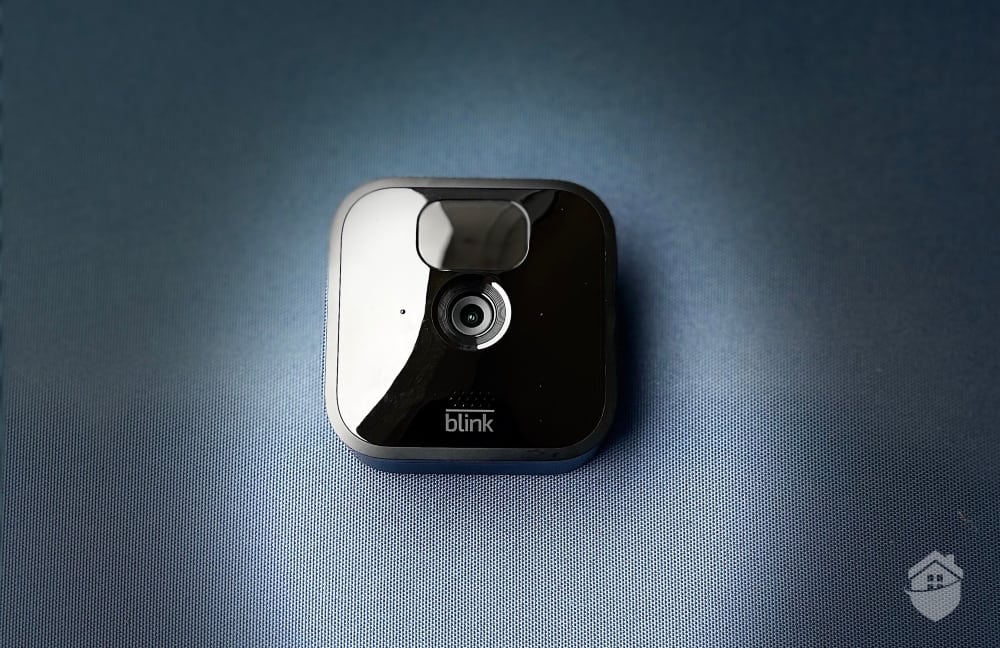
Blink Outdoor
Stay with us as we get this camera up and running, run our tests, and share our full experience to help you decide if the versatile Blink Outdoor makes sense for you and your home.
But first, a few key things to note about the camera:
Check out more recommendations from the SafeHome team:



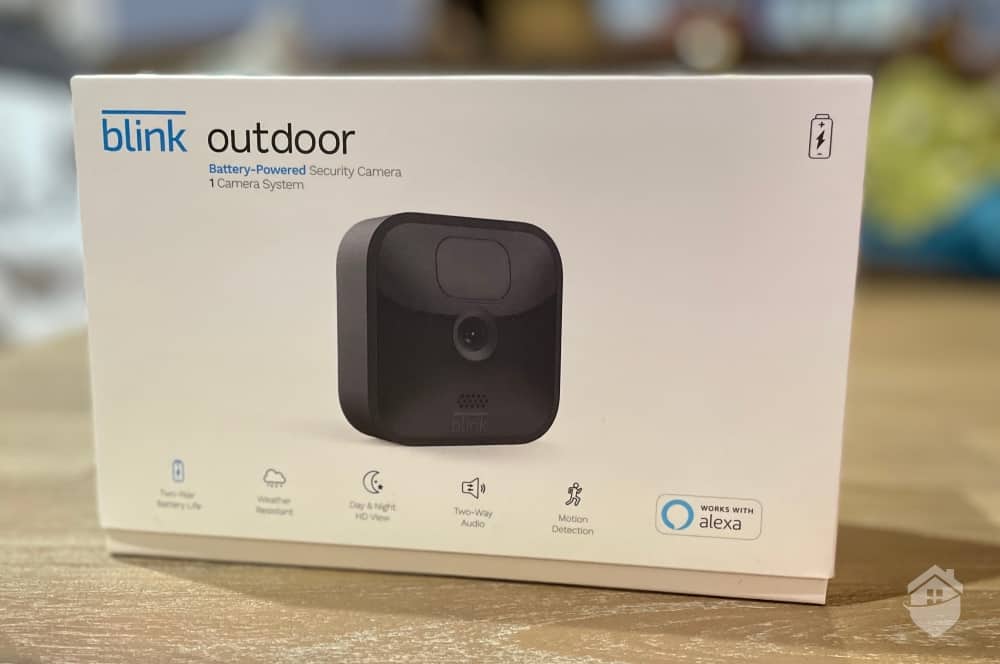
Blink Outdoor Packaging
Our initial thought once we unboxed our Blink Outdoor was how similar it was to its now discontinued predecessor, the Blink XT2. We even dusted off the XT2 to see how they compare. They were the exact same size, but the Blink Outdoor was noticeably lighter. That said, it didn’t seem flimsy. We still think the Outdoor is rugged enough for outdoor use.
We were disappointed, though, to find out that the Blink Outdoor boasts specs similar to the XT2. Here’s a brief comparison:
| Features and specs | Blink Outdoor | Blink XT2 |
|---|---|---|
| Resolution | 1080p HD | 1080p HD |
| Viewing angle | 110 degrees | 110 degrees |
| Night vision | Infrared | Infrared |
| Frames per second | 30 | 30 |
| Battery life | Up to 2 years | Up to 2 years |
| Cloud storage | $3-$10 per month | Free |
| Local storage | Yes (via the Sync Module 2) | None |
| Privacy zones | Yes | No |
The main reason we’re disappointed was that Blink made huge progress to the XT line when it launched the XT2. They improved the video quality, added audio, and introduced activity zones. We were kind of hoping the Outdoor improved on the XT2 the same way the XT2 improved on the XT. Sadly, it didn’t.
Still, we loved our Blink XT2, so we happily proceeded with our test of the Blink Outdoor.
On another note, while the Blink Outdoor’s hardware wasn’t much of an improvement compared to the XT2, the Sync Module 2 that came with the Outdoor was definitely revamped. It’s more compact than the original one, and it even has provision for local storage now.
What’s a Sync Module, you ask?
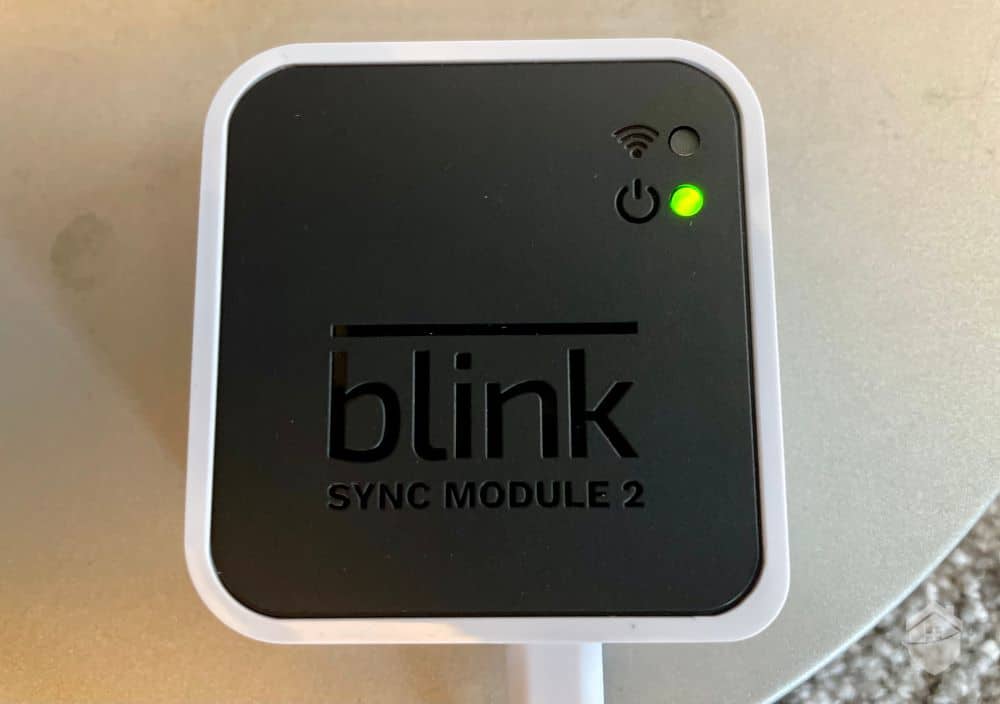
Blink Sync Module
Typically, sync modules and hubs are paired with security cameras to ensure a smoother connection in homes with standard Wi-Fi. In the case of Blink, you’ll need a sync module to use the cameras, which, as we know, can be a turnoff for some users who would rather not have yet another static electronic device taking up space around the house.
But we do want to note that Blink’s Sync Module is much smaller than the hub you’d get in a Swann camera system, with their bulky recorder boxes that resemble circa-1990s laptop computers. Instead, Blink brings the same subtle, minimalistic design to their Sync Module 2 that they bring to their cameras, allowing for easy, discreet placement. (Just make sure it’s close enough to your router to get a strong signal.)
FYI: Clunky base station aside, Swann still makes nice cameras. They did a great job alerting us to activity and even helped us keep a few unwanted critters from leaving presents in our flower beds. Our Swann camera review has lots of insight from our experience, if you’re interested.
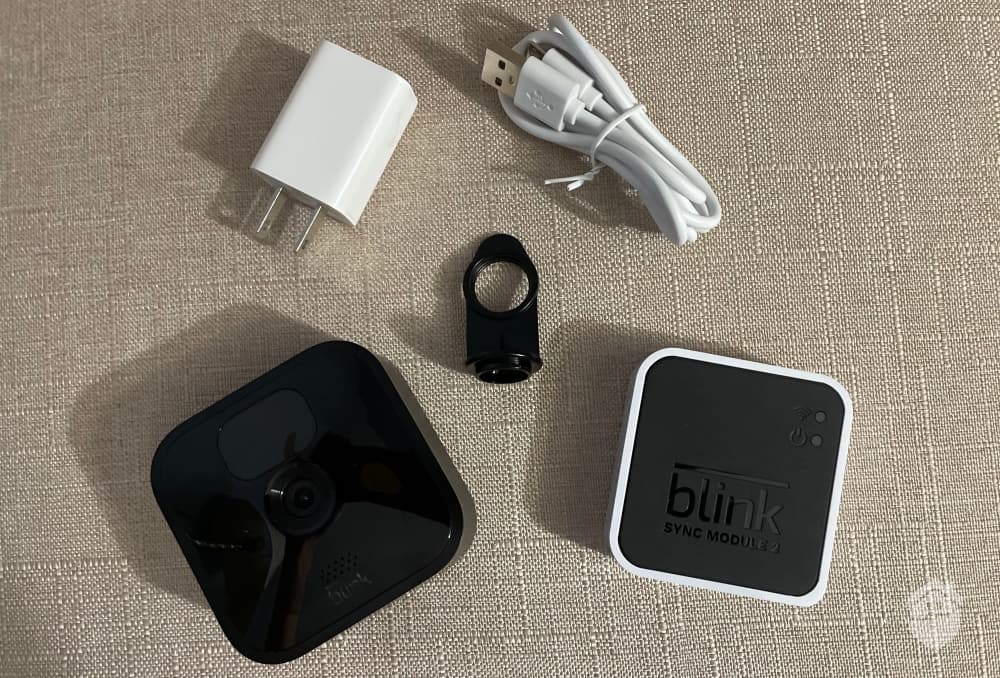
Blink Outdoor Equipment
Now we’ve set up just about every type of security camera there is and shared plenty of tips and tricks over the years. But with Blink, there’s no secrets or even recommendations. It’s one of the easiest cameras to set up. Great news if you’re not technologically inclined. All you need is your smartphone and the Blink app, and the app itself will guide you as you go.
We also think the Blink Outdoor is excellent if you want to outfit your home inside and out. Since you’ll need a Sync Module to set it up anyway, you can grab yourself a Blink Indoor, a battery-powered indoor camera that uses the same Sync Module 2. Another option is the Blink Mini, an even easier-to-work-with indoor cam. Read more about the Blink Mini in our in-depth Blink Mini review.
One of Blink’s biggest values as a company is simplicity, and we clearly saw that in the setup process. There’s no temperamental setting adjustments to make or finicky AI-alerts that barely work to contend with — and pay out through the nose for. You just unbox it, sync it up to your phone, install it wherever you need it, and you’re good to go.
All that is to say we didn’t have any trouble getting this or any other Blink camera to integrate into our network. Adding it to the Blink camera system we were already testing took no longer than 5 minutes, but do keep in mind it’ll take longer than that – up to 10 minutes – to pair the camera if you’re using Blink for the first time.
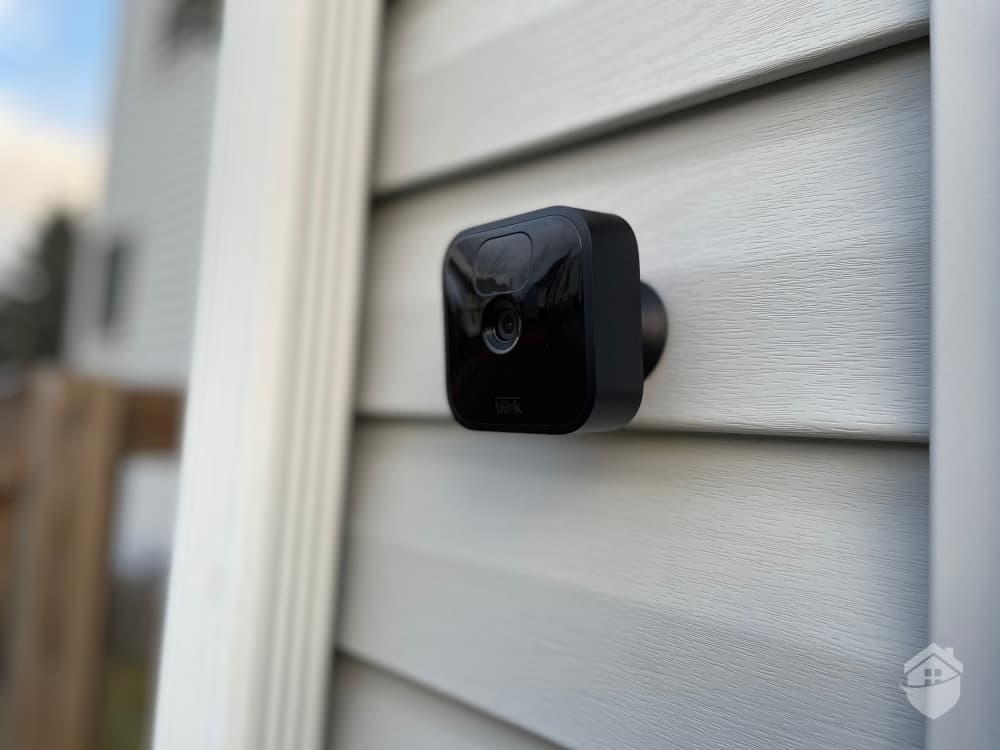
Blink Outdoor – Installed
Once we’d scanned our QR code1 to the Blink Home Monitoring app, the rest was self-explanatory, allowing us to follow in-app prompts and simply wait and watch for the camera and the app to sync up. This simplicity is par for the course in DIY cameras; the technology is strong and powerful, but still easy to use for almost anyone.
After setting it up, we displayed our Blink Outdoor outside, attached to our exterior wall. We did use the provided screws to attach the mounting base, but if you’re looking for something you can move around, you might be able to get away with using weatherproof double-sided adhesive. Weighing in at just four ounces2, it’s one of the lightest outdoor cameras we’ve tested.
Clearly, if you’re looking for easy installation, you’ll get that and more with Blink Outdoor. (Rhyming not intended.)
Since it’s a Blink camera, we knew Blink Outdoor would be reliable and effective even before we opened the box. Having the backing of a global e-commerce giant like Amazon3 sure doesn’t hurt, either.
But as far as aesthetics, it’s important to remember that this is a pretty simple camera that’s meant to be discreet. At 2.7 inches tall, it’s the same size as Blink Indoor. We also want to note that Blink Indoor is available only in white, while Outdoor comes in black.
As far as the picture goes, you’re only going to get a 110-degree diagonal field of vision. That’s not terrible, but you wouldn’t really consider this wide-angle. If you’re trying to cover a broad swath of yard (or driveway, or woods, or whatever), you might consider reading our review of Lorex cameras. Most of those have 160-degree lenses on them, which means you won’t miss the details out at the margins.
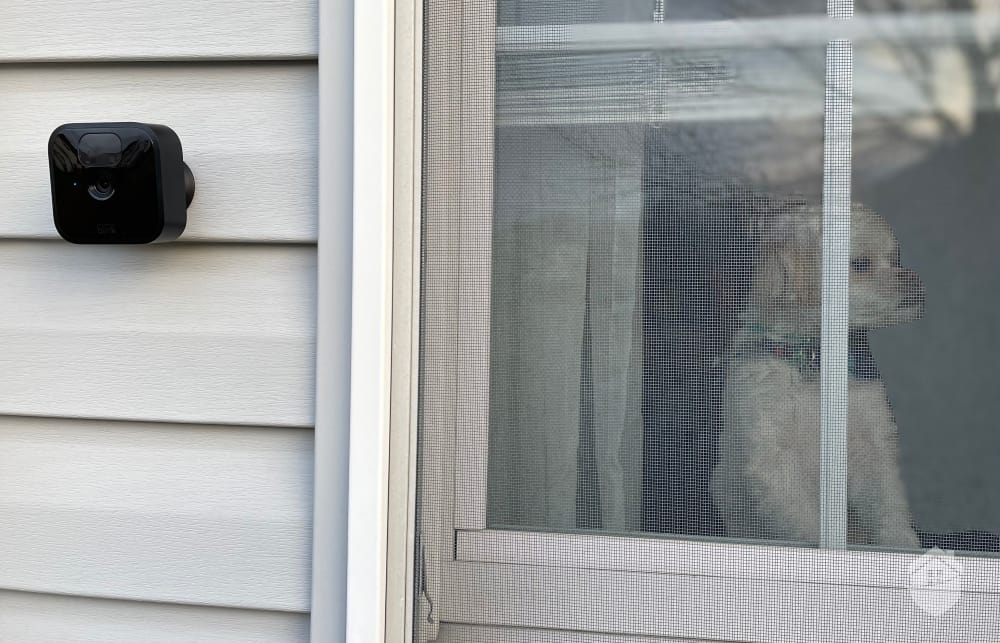
Blink Outdoor Installed Outside our Window
As experts, we know that some people want their cameras to look tough and intimidating rather than sleek and stylish. In our view, that can really help with peace of mind, plus it’s a logical way to display security equipment that shows you mean business.
We’ve reviewed lots of cameras that fall into this category. Chief among them is the Ezviz CN3, a bullet-style device that lets intruders know that their dirty deeds aren’t going undetected. While Ezviz4 isn’t the most illustrious brand when it comes to features, it still has a foreboding look that will surely make the crooks think twice. For more stats and insights on the brand, see our full Ezviz review.
So while we wouldn’t exactly call Blink Outdoor intimidating, we do tend to favor cameras that blend into our home’s decor, rather than stand out from it. Blink, with its simple cubic face and only a small plastic stand for mounting, does that in spades.
Here’s something that’s important to remember about DIY cameras: they might claim to record in 1080p, but that doesn’t mean they do so all the time.
Let us explain. Blink Outdoor is built for up to 1080p HD video resolution, but it’s also built to be fluid. As our home Wi-Fi signal tends to fluctuate throughout the day, the camera essentially solves for this by reducing the video quality automatically, and bumping it up again when the network is stronger. This is key for folks with standard Wi-Fi connections, us included.
Of course, this also means the quality suffers, but in our tests, the difference was negligible. It’s far more important for us to have a camera that conforms to our home and sends us prompt motion alerts than a camera that takes flawless pictures.
Pro Tip: If you’re looking for a camera with continuous 1080p video quality and seamless communication at the same time, you’re better off looking into a whole-home security system that will run smoothly in 1080p HD without Wi-Fi. Our Frontpoint system review has much more on that, if you’re curious.
On cool, clear Ohio afternoons, though, we were happy to watch that bright-yellow school bus pull into the neighborhood and prepare to drop off our kids in full HD. Check out the short video we made of Blink Outdoor…

We’d like to note, though, that the Blink Outdoor doesn’t respond that well to glare. In the video, the top portion was brighter, and so everything in the upper half can of the frame was clear. The lower half portion, however, appeared shadowy, even though there was still enough light.
If you think you might face the same problem – for instance, if the sun sets or rises directly in front of the camera or there are bright street lamps or porch lights in its view, you should consider the Nest Cam (battery). This smart camera from Nest has HDR, which is a great feature for balancing high-contrast frames. You can learn more about it in our Nest Cam (battery) review.
Cameras without two-way audio are becoming more rare as the security industry evolves. Personally, we really like this feature because there’s nothing like using our own “outside voice” to spook potential burglars.
It’s especially helpful for times when you want said burglar to think you’re home … when maybe you’re not. Now, we don’t go around recommending this strategy for every situation, because it can be risky. But in testing this camera’s two-way talk, we did conclude that a simple “May we help you?” could go a long way toward letting the bad guys know they’ve picked the wrong property.
Now you might be a little worried about purchasing a wireless outdoor security camera. “Won’t I have to take it down all the time to replace the batteries?” you might ask. And we might answer with laughter.
Seriously, the Blink Outdoor supposedly lasts an absurd two-years on two AA batteries. The two-year battery life has always been a trademark of Blink. Their first camera, the first-generation Blink indoor camera, gained popularity on a crowdfunding website precisely because of the long-lasting battery life.
That said, there should be a little footnote explaining that the actual battery life depends on a number of factors, such as usage and external weather conditions. For example, the camera goes on standby mode when there’s no movement to conserve power, but it wakes up as soon as it detects motion. The more often it detects movement, the faster the battery will drain.
We monitored the battery level during the first week of our test, which was when we did our motion detection test and streamed the camera a lot. It dropped down to about 90-percent. At the rate we were using it, it would have been out of charge in about three months, which is pretty standard with wire-free cameras.
Speaking of wire-free, the majority of cameras we test that claim to be “wire-free” are powered by a rechargeable battery pack, rather than the disposable AA batteries Blink uses. When we tested a battery-powered Ring Spotlight camera as part of a recent review of Ring cameras, for instance, we did like being able to pop the battery pack right out of the camera’s housing to recharge it without having to take the whole camera down.
Indeed, this is the tradeoff with wire-free devices. Either way, you’re going to have some basic legwork to do. But with Blink, the difference is that the cameras are so lightweight and easy to install, taking the camera down to replace two AA batteries everynow and then really isn’t a hard sell. In fact, it’s something we prefer.
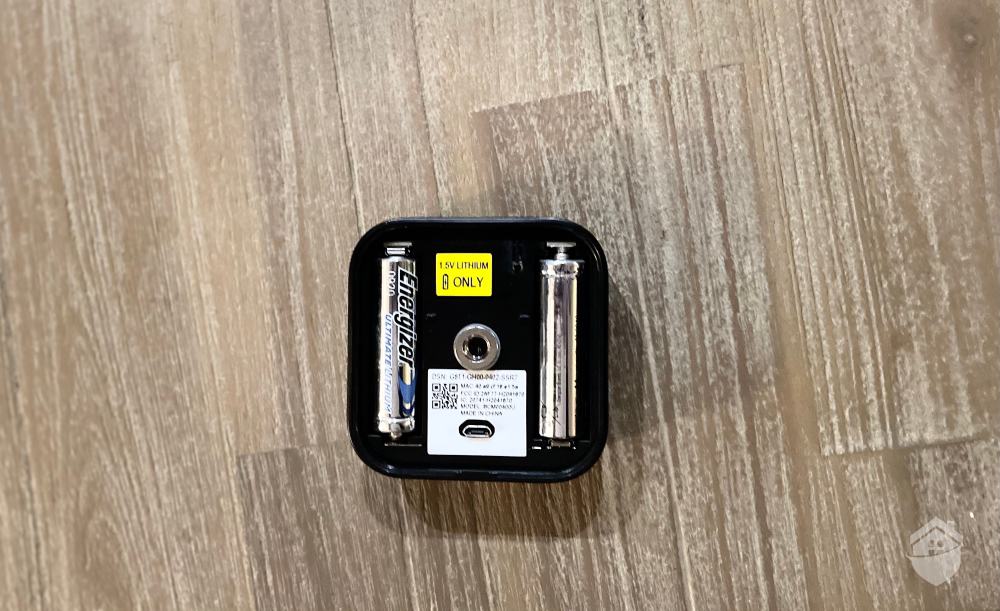
Back of the Blink Outdoor Camera
But beyond operation time, we found that adjusting the camera’s settings can have a big impact on battery life, too. For instance, we went into Activity Zones in the Blink Outdoor’s motion settings and grayed out a horizontal line across the midsection of the feed to block out the street. This way, we would stop receiving alerts every time a car passed by our house. Not only did this make our lives generally less annoying, it also kept the battery from running down too fast. A win-win, we like to say.
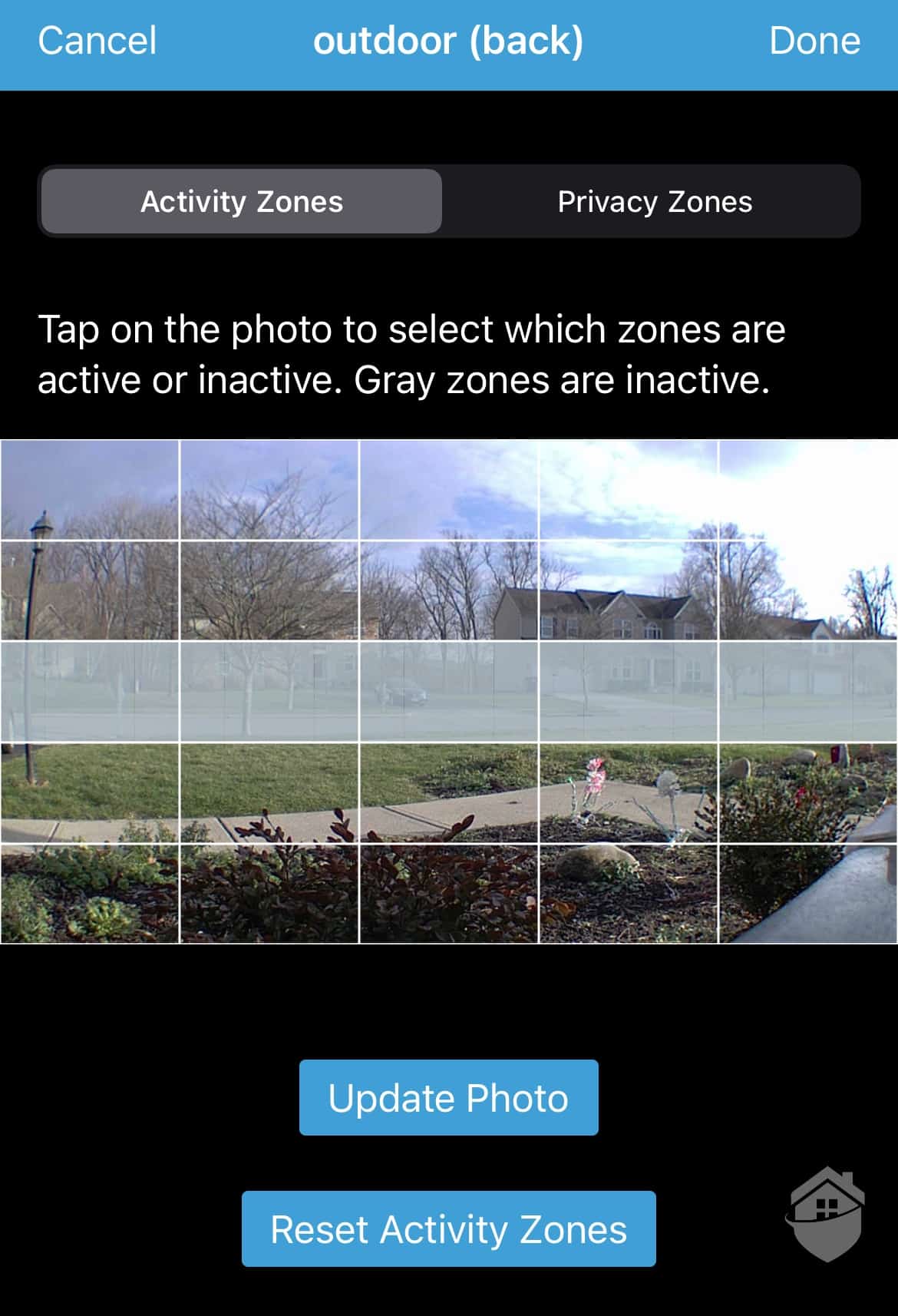
Blink App – Activity Zones
It couldn’t quite match the clarity of a camera with colorized night vision, but Blink Outdoor’s infrared night vision technology was still strong enough to keep the camera running smoothly in black and white each night of our testing period.
Without the colorization or additional lighting built into the camera, though, you’re not going to get a spectacular nighttime picture with the Blink Outdoor. If you do want to see how your yard looks in full color at night, though, we suggest checking out our review of Reolink’s Argus Eco, a functional outdoor camera with dazzling color night vision.
But don’t count Blink out just yet for nighttime viewing. While we can’t say whether our Blink Outdoor picked up every possible activity in our dimly lit yard in the wee hours, it did manage to capture this rotund visitor:

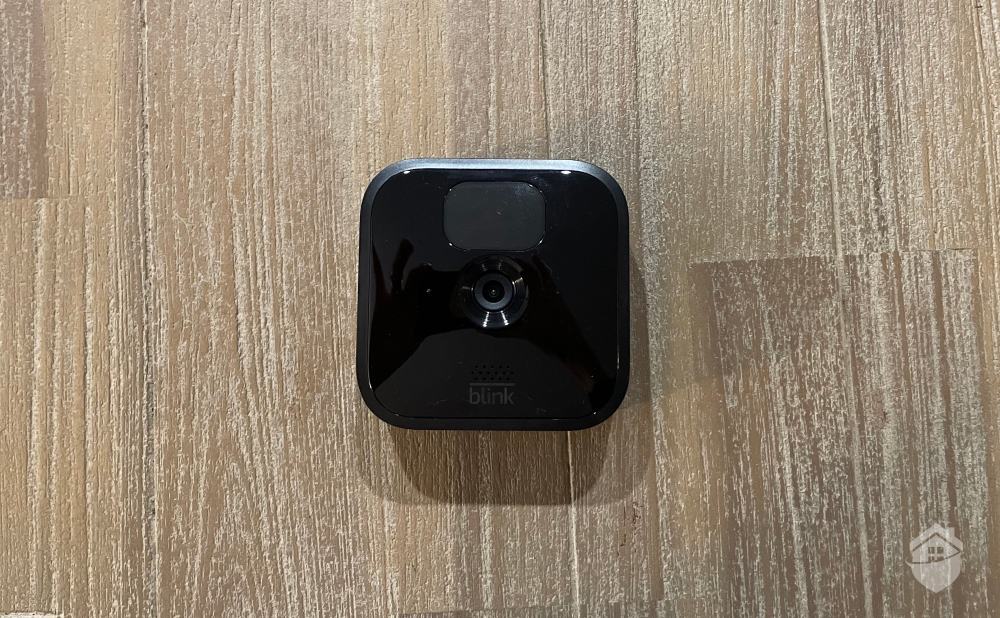
Blink Outdoor Camera
The Blink Outdoor usually retails for $99.99, but often goes on sale especially around holidays and Amazon sale events like Prime Day.
Overall, Blink cameras are priced just right, and Blink Outdoor is no different. They’re also slightly less than the industry average. An Arlo Pro 3 camera, for instance, is as easy to set up and use as Blink Indoor, but with more automation options and upgraded features, it might make it worth the extra money (Arlo Pro 3 costs $169.99 as an add-on and about $300 as a 2-camera system with a hub).
Here’s a breakdown of Blink’s costs, but we also suggest checking out our Blink pricing guide for more detail on how much you’ll pay for equipment, package and bundling options, cloud storage fees, and other features.
| Camera | Features | Retail Price | Sale Price |
|---|---|---|---|
| Blink Mini | Smartphone controls via app Instant notifications Live video streaming Two-way talk HD video quality Indoor use only |
$34.99 | $24.99 |
| Blink Indoor | Built-in motion sensor alarm Live-view streaming Free cloud storage One-way audio Up to 1080p HD video quality |
$79.99 | No Current Sale |
| Blink Outdoor | 2-year battery life Two-way audio Custom motion detection Works with Alexa Use indoors or outdoors 1080p HD video quality |
$99.99 | $63.99 |
| Blink Mini Pan and Tilt | Pan-tilt functionality 360-degree field of vision Real-time alerts Two-way talk |
$59.99 | $41.99 |
| Blink Wired Floodlight Cam | 2600 lumen floodlight AI-powered smart alerts Two-way audio |
$99.99 | $69.99 |
Now might be a good time to point out that Blink just launched yet another version of the Blink Outdoor. They’re calling it the Blink Outdoor 4. The one we tested here was renamed the Blink Outdoor 3, apparently making the Blink XT2 the second generation and the Blink XT the first generation of Blink’s outdoor camera line.
The Blink Outdoor 4, unfortunately, offers much of the same features as the Outdoor 3, except with a wider viewing angle. We touched on this earlier; the Blink Outdoor 3 isn’t a good piece of hardware if you’re monitoring a wide outdoor space. With the Outdoor 4’s 143-degree diagonal field of view, it’s looking like a better option.
The Outdoor 4 also promises to offer person detection, finally a smart feature that can seriously reduce false alarms by alerting you only when a person is detected. However, this feature requires a cloud subscription.
The Blink Outdoor 4 has a slightly higher price tag of $119, which is $20 more than its predecessor, but given the upgrades, we think it’s a good buy.
When it comes to storing the camera’s video history, no two brands are exactly alike. Some offer low equipment costs and pricey video storage; others offer everything upfront and no monthly subscriptions; and still others prefer to keep both equipment and storage costs low. We’ve found advantages and disadvantages in all of those formats, so we can’t really say that one is better than the other.
In the case of Blink Outdoor, we now have a USB port in our sync module to add a flash drive for local storage – something we didn’t have in our first go-round with Blink cameras.
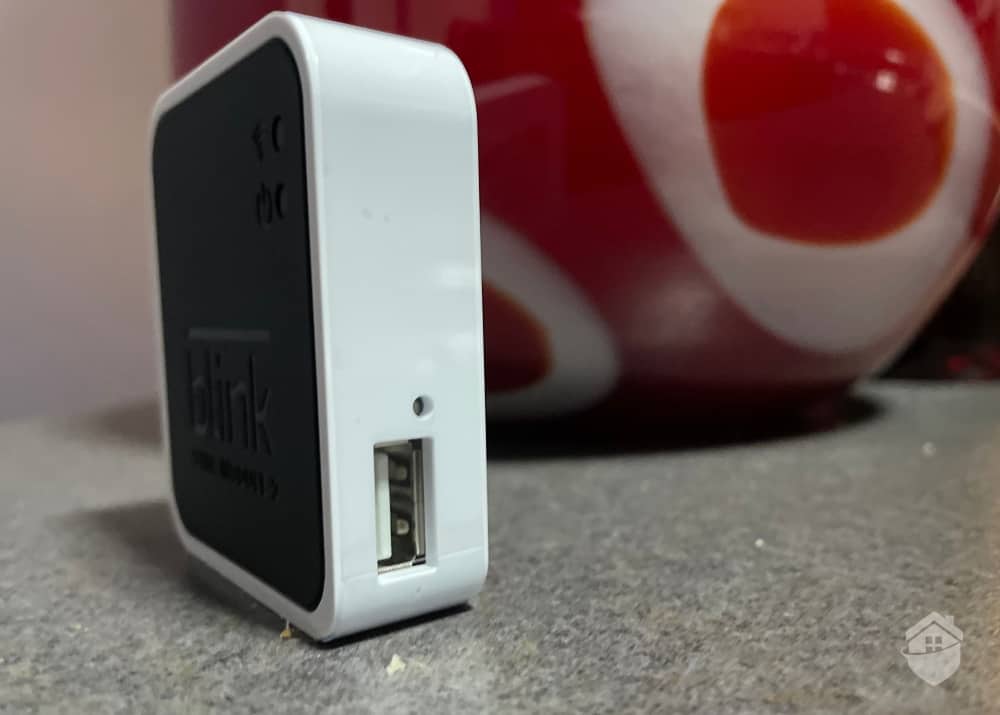
Blink Sync Module
We did find a catch, though. When Blink released the indoor/outdoor XT2 cameras (now discontinued), they came with a basic cloud-based storage plan, so we could store some of our video history at no extra charge. Now, to our slight dismay, Blink is no longer offering that plan. But including an updated sync module, with a port for local storage, appears to be the compromise Blink offered to users who’d grown accustomed to Blink’s free plan.
Either way, we’re seeing flexible options here for storing video both locally (via a micro SD card or flash drive) and through the cloud that make Blink Outdoor a worthwhile choice, despite the loss of some free storage.
| Blink Plans | Basic | Plus |
|---|---|---|
| Motion-Activated Alerts | Yes | Yes |
| Live Streaming | Yes | Yes |
| Video History | 60 Days | 60 Days |
| Two-Way Talk | Yes | Yes |
| 10% off Blink Products | No | Yes |
| Warranty | 1 year | As long as subscription is active |
| Number of Cameras | 1 | Unlimited |
| Price | $3 per month | $10 per month |
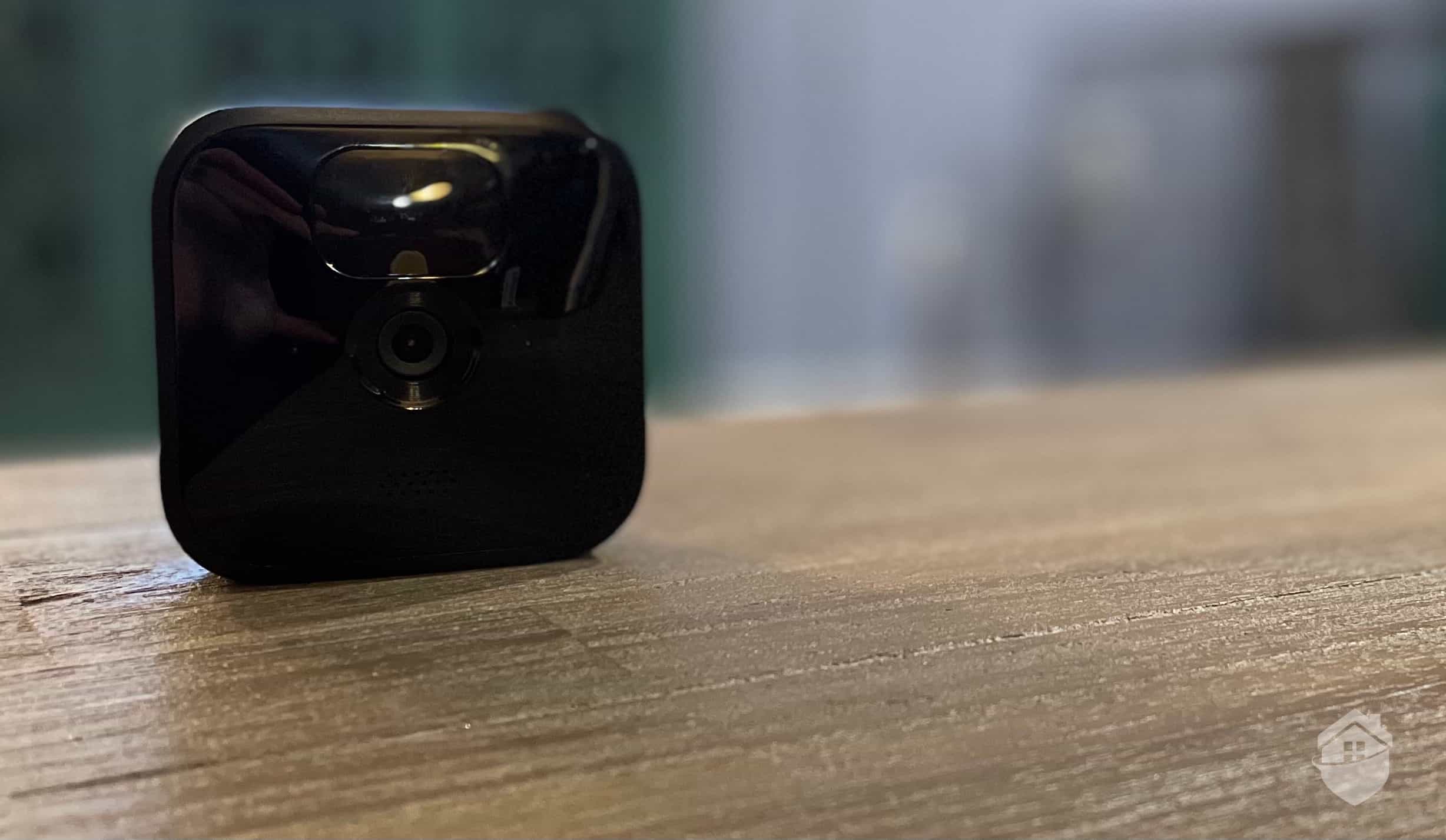
Closeup of the Blink Outdoor Camera
With Blink Outdoor, we found a powerful camera with minimalist design principles. Video quality remained strong through each of our tests, and we felt secure and confident with a Blink Outdoor camera keeping an eye on our home’s exterior.
While we can’t say the camera is flawless, we do really like the Blink Outdoor. It’s a solid piece of equipment, it has all the customizations you’ll need available through the app — like activity zones, sensitivity adjustments, and alert schedules — and it can even connect with our Amazon Echo for more integrated home security.
All in all, Blink Outdoor gets our recommendation as a top pick for securing small spaces. While we see it being able to protect a single-family home or a larger house if you buy enough cameras, its limited field of view and wireless range might make it difficult to work with. For a smaller space, though, you’d need just one or two Blink Outdoors and maybe throw in an indoor camera or two to get reliable and sensible protection.
For more ways to keep your small space safe, check out our renter’s guide to apartment security.
Yes. You can buy Blink in package form, in 2, 3, or 5-camera packages with an included sync module.
The camera has a weather rating of IP65, meaning it’ll handle most storms and bad weather. It’s Blink’s only outdoor camera, but of course you can also use it indoors as well.
No. If you signed up for a Blink account before April 15, 2020, you’ll still have some basic storage to use for free for as long as you own the cameras. If you signed up after that, you’ll have to store your video history either locally, by attaching a hard drive to the sync module, or to the cloud, through a Blink subscription.
The quality of our audio conversations on the Blink Outdoor was mostly smooth. We did encounter some trouble with ambient noise, which we’ve run into in basically every outdoor camera when we test their audio. It made it slightly harder to hear each other at certain times, but it didn’t harm the experience.
At $100, Blink Outdoor is not overly expensive. It’s pretty well-aligned with DIY cameras, and for what it offers, we consider it a fair price.
Kelleher, S. (2020, June 5). Why QR Codes Are Popping Up Everywhere During the Pandemic – and How to Read Them in a Snap. Forbes.
https://www.forbes.com/sites/suzannerowankelleher/2020/06/16/why-qr-codes-are-popping-up-everywhere-during-the-pandemic/?sh=4276d53ac14d
Blink. (2023). Blink Outdoor and Indoor (3rd Gen) technical specifications.
https://support.blinkforhome.com/en_US/tech-specs-indoor-outdoor/blink-outdoor-and-indoor-gen-2-technical-specifications
Tannam, E. (2018, Feb. 12). Why did Amazon pay $90m to acquire Blink camera technology? Silicon Republic.
https://www.siliconrepublic.com/companies/amazon-blink-acquisition
Ezvizlife. (2020, June 23). Ezviz launches its Outdoor Security Cam, with Color Night Vision and A.I. Active Defense. Ezviz Inc.
https://www.ezvizlife.com/uk/newsroom/ezviz-launches-its-outdoor-security-cam-with-colour-night-vision-ai-active-defence/248